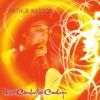 Arthur Nasson reaches some pretty lofty heights on his charming new pop rocking album West Cambridge Cowboys. The album offers plenty of fine moments to keep listeners revisiting each track. A strong Beatles influences surfaces in some places, and Nasson uses his influences well, delivering catchy tunes with sprightly melodies and solid craftsmanship.
Arthur Nasson reaches some pretty lofty heights on his charming new pop rocking album West Cambridge Cowboys. The album offers plenty of fine moments to keep listeners revisiting each track. A strong Beatles influences surfaces in some places, and Nasson uses his influences well, delivering catchy tunes with sprightly melodies and solid craftsmanship.
His opening track “She Was Never Really There” features some of the contrasts of loud and soft from earlier eras. A lovely piano plays over a fulsome low end and a wide beat. Nasson’s vocal reminds of the handsome smooth voices of the British invasion. His music often reminds of what those English boys were doing ten years after the invasion. Nasson’s sentimental attachment to that music serves him well here as he adds huge enthusiasm.
“Watch Your Back Now” turns up the heat with an unflappable forward beat. Nasson’s chorus, backed by cascading guitars, catch the ear like the best of them. Nasson’s brother Graham is the CD’s drummer and his other brother Colin Nasson contributes synthesizer, slide guitar, Ring Modulated Guitar and percussion. Everything else on here, though, is Nasson himself.
Nasson‘s greatest strength is his ability to construct a song with many ear catching parts. “Phil’s Pony” is a steady coo of vocal brightness that intros a tasty pop rock nugget titled “Blind To Reason.” Smooth aplomb in the chorus, snappy electric guitar, and rock and roll spunk hit you just right from that space just below the vocal harmony.
Haunting, echoing piano lines usher in “Nowhere Street,” a jazzy, jaunty upbeat tune with an infectiously peppy beat. This one races forward as if every instrument was trying to break out of a mad tie and take the lead. A synth melody glides forward while a guitar chord madly punctuates the end of each chorus. The urgency of it all gives it the feel of something that’s been an epic pop rock song for decades. It sounds like something Elton John should have released to great fanfare in the early 1970s and remained a hit for decades after.
“Robot Trouble” uses sound effects in unusual combos, making a joyfully odd intro into the next tune. “I’ve Got A Flanger In My Heart” is an edgy pop rocker with a wide, sweeping approach. Nasson fills this one up with all sorts of melodic notes and a whole lot more. Piano tinkling crosses with eerie synths and swashbuckling guitars while the beat feels retro early 1960s. You get the feeling Nasson is trying to make the whole world dance to his tune with a lush arrangement that draws in all that crosses its path.
Nasson gives his vocal plenty of bracing guitar support on “All Dressed In Plastic.” The tune has a hipster feel that reminds of late 1970s Elvis Costello. There’s an endearing interval of guitar notes that pull you along. It’s good to hear a pop song that makes a lot of its texture simply in the guitars and drums. The song craft jumps at you as much as the instrumentation and vocals, making you feel you’ve invested your time wisely in someone who will in turn give you music worthy of your attention.
The sentimental pop ditty “From A Window On A Train” gets its lift from Nasson’s dreamy, piano infused chorus. Nasson expresses the sense of distance we all feel from things we pass by when traveling. Clever and inventive, Nasson comes up with a squeaky sound that is half music and half sound effect that rides along beside the song. A personable vocal approach juxtaposed with that technical backing makes you feel the connection between human beings and that modern convenience known as a train. It is simply uncanny how Nasson can set a mood.
“Auntie-Matter,” another Nasson technical concoction, juxtaposes a gurgling low end with a melody that might be an electric flute. It definitely makes one curious to see how he came up with it. “You Don’t Know What You Don’t Know” has British gentlemanly charm and a sweet electronic melody. Nasson’s ability to punch things up with sudden, jack in the box guitar chords and piano chops pulls you into its details. The nice changes are good structurally and they’re also fun to listen to.
Piano pop ditty “Talking To The Air” takes dreamy modern music to a new level. Nasson injects an undercurrent of urgency into this otherwise gentle piece. His mellow, dreamy coos conjure memories of John Lennon’s “Number Nine Dream,” making you feel that the song is lifting off into the air and going some place with a purpose.
Closing out with “You’ll Only Hurt Yourself,” Nasson pays out a serious lead guitar phrase, controlling the pace of this number with his slowly smoldering intro. His incendiary guitar line could burn a whole through cement, yet chooses to lead this number forward with its charismatic sound. There’s a hearty attitude inside Nasson’s massively wide ride out, and again, the listener feels he’s listening to one of those great, larger than life classic rock albums.

